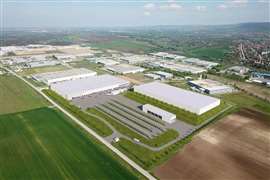IC November 2008 business news
05 March 2009
The week leading up to this last-gasp rescue package was the most devastating the world's stock markets had seen since 1929. The Dow for example opened on Monday October 6 at 10323 points, but closed-out on Friday at 8541 points, a 17.26% fall for the week. The intra-day low of 7774 points on Friday October 10 was the lowest the Dow since early 2003.
As the table shows, the package of loan underwriting and government acquisition of shares in many of Europe and America's largest banks may have saved those institutions from collapse, but did little to lift share prices. The Dow closed the following Friday (at the end of week 42) at just 8852 points - only a modest improvement on the previous week, when the end of the world seemed nigh.
On a longer scale, the Dow lost a massive 19.67% of its value between weeks 38 and 42 - about the same as the slide for the FTSE 100, which gave up 19.91% of its worth over the same period. The Nikkei suffered worse, with a 24.46% loss.
Shares in the world's lifting equipment manufacturers were caught up in the turmoil, with IC's share index diving a massive 34.76 points to finish at 226.04 points. The last time it was this low was July 2005.
All the companies that make up the Index saw their share prices fall of course. The only bright spot as such was Palfinger, which saw its losses limited to just 6.5%. For the other manufacturers there were falls of at least 30% to contend with.
Undervalued
Coming on the back of more than a year of sliding share prices, many of the companies that make up the Index are now valued at a fraction of what they were at the height of the boom. For example, mid-October saw Terex's stock market valuation fall to just US$ 2 billion, compared to over US$ 9 billion last autumn.
By any normal measure, this is an insanely low market capitalisation - only about 3.2 times company's lowest estimate of its net earnings this year. The price to earnings ratio for Manitowoc is similar at about 3.5.
Such low share prices are completely divorced from reality - putting a price on companies that are well below the value of their physical assets such as factories, buildings, cash and inventories.
That opens up an interesting array of possibilities. First, when some confidence returns, it could mean share prices shoot back up very quickly to more realistic valuations. Second, companies without a strong ownership structure could become the targets of hostile takeovers (or cheap friendly takeovers). Third, vulnerable companies could become victims of the kind of asset stripping corporate raiders who were infamous in the 1980s for buying companies on the cheap and selling the assets for less than they paid for the shares.
November IC Share Index
Stock Currency Price at start Price at end Change % Change 12 months ago 12 month % change
IC Share Index* 346.45 226.04 -120.41 -34.76 648.16 -65.13
Dow Jones Industrial Average 11020 8852 -2167 -19.67 13807 -35.88
FTSE 100 5165 4136 -1028 -19.91 6423 -35.60
Nikkei 225 11921 9006 -2915 -24.46 16414 -45.13
Hitachi Construction Machinery YEN 2405 1289 -1116 -46.40 4220 -69.45
Konecranes € 18.50 13.00 -5.50 -29.73 27.56 -52.83
Kobe Steel YEN 228 159 -69 -30.26 413 -61.50
Manitowoc US$ 18.19 11.89 -6.30 -34.63 44.01 -72.98
Palfinger € 13.37 12.50 -0.87 -6.51 33.00 -24.24
Tadano YEN 686 418 -268 -39.07 1433 -70.83
Terex US$ 33.81 20.35 -13.46 -39.81 83.67 -75.68
*IC Share Index, end April 2002 (week 17) = 100
Exchange rates - value of US$
Currency Value at start Value at end Change % Change Value 12 months ago 12 month % change
YEN 104.85 101.40 -3.45 -3.29 116.21 -12.74
€ 0.6953 0.7428 0.0475 6.83 0.7168 3.63
UK£ 0.5499 0.5778 0.0279 5.08 0.5004 15.46
Period: Week 38 - 42


